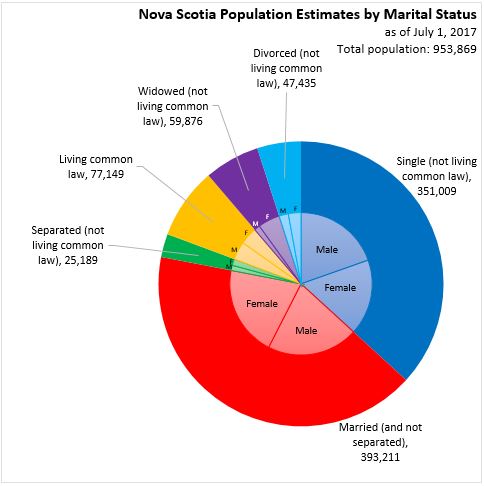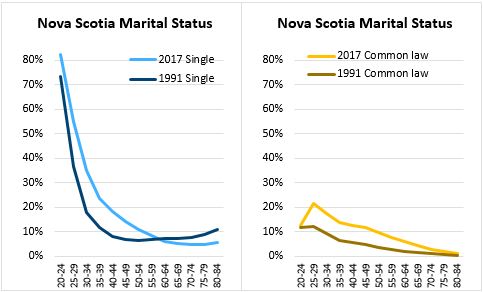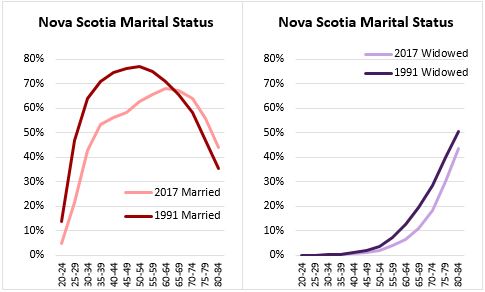The Economics and Statistics Division maintains archives of previous publications for accountability purposes, but makes no updates to keep these documents current with the latest data revisions from Statistics Canada. As a result, information in older documents may not be accurate. Please exercise caution when referring to older documents. For the latest information and historical data, please contact the individual listed to the right.
<--- Return to Archive
For additional information relating to this article, please contact:
November 08, 2017POPULATION BY MARITAL STATUS FOR JULY 1, 2017 Nova Scotia's population can be broken down into six categories of marital status: single, married, separated, living common-law, widowed and divorced.
Of the 953,869 residents estimated for Nova Scotia as of July 1, 2017 the largest numbers are either married (393,211) or single (351,009). Note that this includes all ages, so younger residents are all counted as 'single'. There are a further 77,149 persons living in a common-law arrangement. Almost 60,000 Nova Scotians are widowed and a disproportionate number of these are women. There are 25,189 Nova Scotians who are separated and 47,435 who are divorced.

Relative to national averages, the composition of Nova Scotians by marital status includes fewer singles a higher proportion who are married. This is consistent with an older population like Nova Scotia's. Newfoundland and Labrador - also a relatively older population - has the highest percentage of married persons. The lowest percentage of married persons (and highest share living common law) is found in Quebec. The highest shares of single persons are found in the prairie provinces.

Over time, the composition of Nova Scotia's marital status has changed. Since 1991 (the first year in which common law arrangements were reported separately), there are fewer people reporting as single and a higher share living common law. This is particularly the case in younger age cohorts.

Compared with 1991, the share of married persons in 2017 is also lower across a number of younger age cohorts, but it is higher for older cohorts. There are fewer widows among older cohorts.

The share of population either separated or divorced has also risen between 1991 and 2017 for a number of age cohorts, but these are relatively small compared with the population as a whole.

Source: Statistics Canada CANSIM table 051-0042
<--- Return to Archive